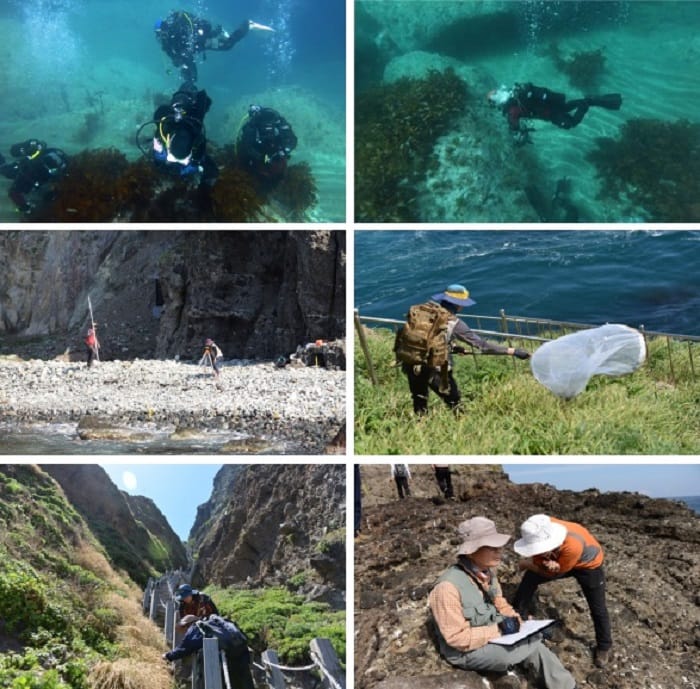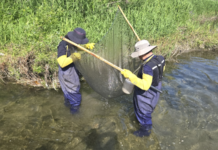Scientists have recently revealed that a total of 594 new organisms, including three species previously not found in Korea and 124 species previously not found in or around Dokdo Island, have been found to be living and thriving in the waters and around the islands of Korea’s East Sea.
The National Institute of Ecology announced on Sept. 23 that it has confirmed the existence of those newly-found life forms after an investigation that ran from April last year to April this year. The institute was studying the ecology around Dokdo Island, the first island to be protected by the Korean government for its ecological and geographical importance. Such research into Dokdo’s ecosystem is conducted every five years, according to the Ministry of Environment’s “Second Basic Plan to Preserve Islands Which Bear Ecological and Geographical Values.” The scientists at the institute surveyed the area’s geography, vegetation, flora, tidal currents, insects, mammals, fungi, oceanic invertebrates and marine algae, and through all four seasons of the year.
The 594 organisms revealed through this research to be living on or around Dokdo Island include 62 species of plants, including bryophytes, 70 species of birds, including eight endangered wild species, one species of mammal, 35 species of insect, 191 species of oceanic invertebrates, 230 species of marine algae and five species of fungi.

A total of 594 new plants, animals and fungi have been found to be living on or around Dokdo Island. The photos are of three species newly found to have been living there, Paranamixis, Peramphithoe and Sunamphitoe (from left to right).

A survey of Dokdo Island’s environment and ecology is conducted every five years, in line with the Ministry of Environment’s second Basic Plan to Preserve Islands Which Bear Ecological and Geographical Values. In the picture, scientists survey marine algae, the island’s geography, and its population of insects, mammals and other forms of life.
The three species previously unrecorded as living in Korea are oceanic invertebrates, including animals from theParanamixis, Peramphithoe and Sunamphitoe genuses. The life forms previously unrecorded as living on or around Dokdo are 124 species of Arbuscular mycorrhizal fungi, 64 species of marine algae, 48 species of oceanic invertebrate, three species of plants, three species of insects and one type of bird.
Some of the plants, animals and fungi previously not found on Dokdo have been found elsewhere in Korea.
The eight endangered wild bird species include the first tier hawk, the second tier osprey, the honey buzzard, the sparrow hawk, the goshawk, the crested murrelet, the black wood pigeon and the Emberiza aureola. Based on the results of this survey, the National Institute of Ecology has now produced an ecological map of Dokdo Island, which will help people to understand and care for the outcropping’s ecosystem. Vegetation that changes seasonally is easily recognizable on the map. The map also provides a diagram of the food chain for organisms both on the land and in the sea, and illustrates how they influence on another.
The map shows the main species that live in the habitat, including the black-tailed gulls near Seodo Island and the giant knotweed that guards areas of Dongdo Island. You can download the map from the website of the National Institute of Ecology (www.nie.re.kr).
Director Choi Jaewon at the institute said, “We will continue to survey the Dokdo ecosystem so that results can be used as a basis to preserve and manage our living resources. We will also pour efforts into introducing the pristine ecosystem of the island to Koreans and to non-Koreans around the world by producing specialized books about it.”
By Wi Tack-whan, Yoon Ji-hye
Korea.net Staff Writers
Photos: National Institute of Ecology
whan23@korea.kr























